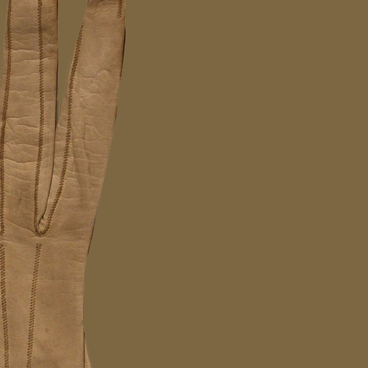The photo reproduction here was made from a photo by Wilhelm Jacob Lauffert; little is known about him today. The photographer was an artist of the Imperial Academy of Arts, worked in Saint Petersburg and was one of the first studio photographers in Russia. In 1862, he became the owner of a photo atelier in Vrevskaya’s house in Bolshaya Morskaya Street.
In those years, photographic equipment and paper were still far from perfect, and that is why Lauffert used retouching and white pigment to make the model’s figure and face look sharper.
There are few portraits of N.G. Chernyshevsky: the reason for that was the writer’s heavy burden of life, the conditions of his work, as well as his personal preferences. In the funds, there are five images of Chernyshevsky produced during his life and one created after his death, a photo taken by Yegerev, a photographer from Saratov. Mikhail Chernyshevsky, the writer’s younger son, took photos of all those images and gave them as a gift to the museum in 1920.
This portrait was presented by Mikhail Nikolayevich for publication as part of The Complete Works by N.G. Chernyshevsky. The permission was first granted after the writer’s arrest.
On the reverse side of the photo, there is an inscription that says: “Nikolay Gavrilovich Chernyshevsky, 1859”. There is also a seal by the Saint Petersburg Censorship Committee and a note by a censor named Lebedev: “Approved by censorship, 1905 1/VI, Saint Petersburg”.
When the photo was taken, Nikolay Gavrilovich Chernyshevsky was 31 years old. At that age, he worked in the Sovremennik magazine and was already an experienced employee. In the summer of 1856, when Nikolay Alekseyevich Nekrasov went abroad, he handed over his editor’s rights and functions to Chernyshevsky.
Since 1857, Nikolay Aleksandrovich Dobrolyubov became head of the literary criticism department of the Sovremennik magazine. During that period, Chernyshevsky became much more interested in the ‘peasant problem’ than in the matters of literature. In 1858, he became the first editor of the Voyenny Sbornik magazine and attracted several Russian military officers to revolutionary circles. In the same year, a split-up occurred in the Sovremennik magazine which divided raznochinets (intellectuals not belonging to the noble class) and gentry writers.
In those years, photographic equipment and paper were still far from perfect, and that is why Lauffert used retouching and white pigment to make the model’s figure and face look sharper.
There are few portraits of N.G. Chernyshevsky: the reason for that was the writer’s heavy burden of life, the conditions of his work, as well as his personal preferences. In the funds, there are five images of Chernyshevsky produced during his life and one created after his death, a photo taken by Yegerev, a photographer from Saratov. Mikhail Chernyshevsky, the writer’s younger son, took photos of all those images and gave them as a gift to the museum in 1920.
This portrait was presented by Mikhail Nikolayevich for publication as part of The Complete Works by N.G. Chernyshevsky. The permission was first granted after the writer’s arrest.
On the reverse side of the photo, there is an inscription that says: “Nikolay Gavrilovich Chernyshevsky, 1859”. There is also a seal by the Saint Petersburg Censorship Committee and a note by a censor named Lebedev: “Approved by censorship, 1905 1/VI, Saint Petersburg”.
When the photo was taken, Nikolay Gavrilovich Chernyshevsky was 31 years old. At that age, he worked in the Sovremennik magazine and was already an experienced employee. In the summer of 1856, when Nikolay Alekseyevich Nekrasov went abroad, he handed over his editor’s rights and functions to Chernyshevsky.
Since 1857, Nikolay Aleksandrovich Dobrolyubov became head of the literary criticism department of the Sovremennik magazine. During that period, Chernyshevsky became much more interested in the ‘peasant problem’ than in the matters of literature. In 1858, he became the first editor of the Voyenny Sbornik magazine and attracted several Russian military officers to revolutionary circles. In the same year, a split-up occurred in the Sovremennik magazine which divided raznochinets (intellectuals not belonging to the noble class) and gentry writers.

